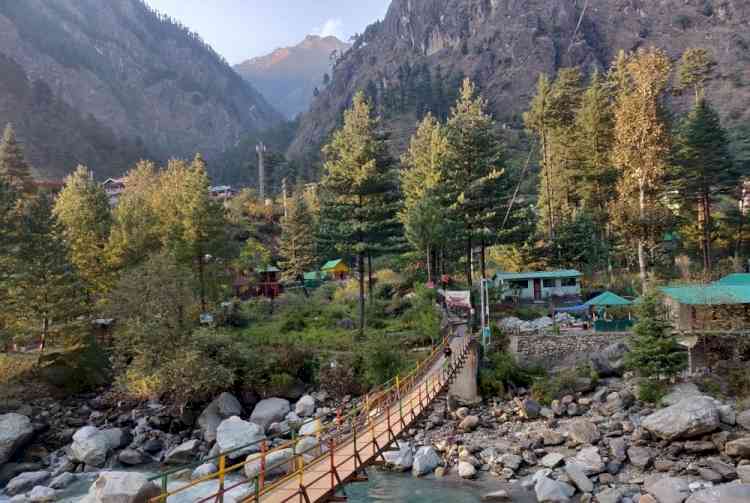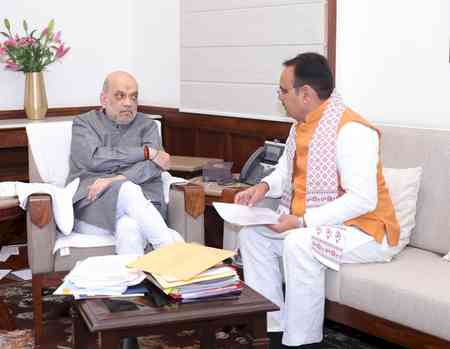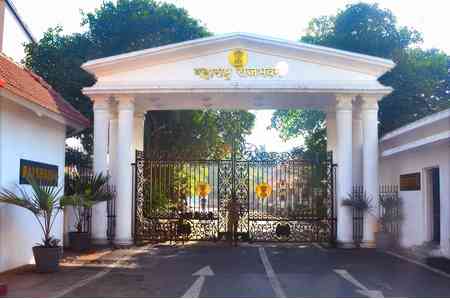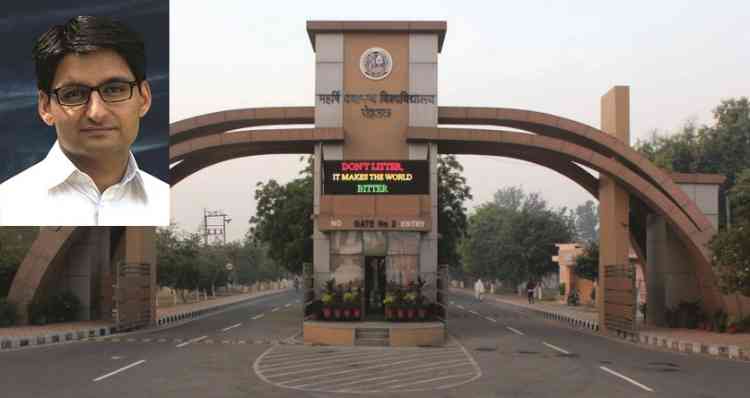Haphazard realty boom in Himachal threatens state's ecological balance
Rampant construction by realtors and amendments to land laws from time to time to attract non-residents have created a concrete jungle across Himachal Pradeshs once scenic towns, starting with its capital Shimla, the erstwhile summer capital of British India.

Vishal Gulati
Shimla, April 24 (IANS) Rampant construction by realtors and amendments to land laws from time to time to attract non-residents have created a concrete jungle across Himachal Pradeshs once scenic towns, starting with its capital Shimla, the erstwhile summer capital of British India.
Geologists warn that this can't be good for the mountains and may amplify ecological risk.
Section 118 of the Himachal Pradesh Tenancy and Land Reforms Act of 1972 provides for restriction on transfer of land in favour of a person who is not an agriculturist of the state, even state residents.
This section and rules thereunder have been amended from time to time to further the basic intention behind its enactment of protecting the interests of local inhabitants while ensuring that the development of the state is not hampered, claims the government.
Contrary to this, the desire to buy an ultra-luxury cottage or a flat in the idyllic settings has been attracting a stream of rich who are largely owning a piece of paradise to escape the hell of summer and to enjoy a snowy landscape in winter in the hills. And this helps the realtors building business.
In the state capital most of the buildings are "precariously hanging" on the steep slopes and clinging to one another and are in danger of collapsing like a pack of cards with a moderate intensity temblor. This can be catastrophic for congested settlements like Sanjauli, Hira Nagar and Ladakhi Mohalla that could take a heavy toll on lives.
The successive Congress and BJP governments kept on amending the existing Interim Development Plan prepared for Shimla planning area in 1979 just for political gains and are least bothered to set in place a scientific development plan, say local residents.
Planned for a maximum population of 16,000, Shimla now supports 236,000 people, as per the provisional figures of the 2011 census.
Under the state's land laws, outsiders who want to purchase a house or a cottage from a builder whose project lies within the municipal limits do not have to seek individual permission under section 118 of the tenancy and land reforms law from the government.
It's the builder who will procure all the permissions.
But if a housing project is outside the municipal limits, each buyer of a house or a flat or a cottage has to seek normal permission from the Deputy Commissioner concerned, a revenue official told IANS.
"If you are buying the land in chunk, then only permission from the state cabinet is required under Section 118. In most cases, it is granted to the colonisers only," the official added.
Even non-agriculturists in Himachal Pradesh seeking to buy property other than what is offered by the Himachal Pradesh Housing and Urban Development Authority (HIMUDA) outside the municipal limits will have to seek permission from the government.
The Himachal Pradesh Town and Country Planning (Amendment) Act 2013 enables the builders to construct and sell flats under various categories.
A two BHK flat in Shimla, Kasauli and Dharamsala towns is currently selling for approximately Rs 40-Rs 55 lakh, depending upon the location of the property, drive-in facility and availability of the sun. A three BHK is over Rs 65 lakh.
In picturesque Dharamsala, famed as the abode of Tibetan spiritual leader the Dalai Lama and located in the backdrop of the mighty Dhauladhar range, a two BHK flat costs from Rs 35-Rs 45 lakh, while a three BHK flat is from Rs 55-Rs 75 lakh.
A plot in Dharamsala costs from Rs 3 lakh to Rs 20 lakh per marla, say real estate representatives.
The upscale properties in Shimla are in Jakhu hills, overlooking the Ridge, and New Shimla, while in Dharamsala the emerging destinations are Dari, Kotwali Bazaar and areas ringed around the Himachal Pradesh Cricket Association (HPCA) showpiece stadium.
Those in the realty sector say there is an upturn in the residential sector across the state after a gap of over two years.
"Small and medium builders were the worst hit first by demonetisation, then the Goods and Services Tax rollout and later owing to the pandemic with sales tumbling and prices falling by up to 60 per cent. During this period nobody was interested in investing even at prime destinations," said a builder setting up cottages in the Kasauli hills. "Now inquiries have spiked, as have the sales," he added.
Buying a house from HIMUDA is the best option as there is no need to get government permission.
In a move to lift the ban on construction and to give relief to the owners of about 20,000 unauthorised constructions in Shimla, the present BJP government is finalising the Draft Shimla Development Plan, a first in over four decades, prepared by the Department of Town and Country Planning to allow construction even in congested and sinking zones.
It proposes to enhance the limit of a two-and-a-half storey house in the non-core area by raising an additional storey.
Despite the National Green Tribunal (NGT) banning all new construction in Shimla's core and green zones in 2017, the proposed development plan has a provision to allow construction there up to two-and-a-half storeys.
A section of old-timers, who feel the need to save Shimla, known as the �Queen of Hills' -- the moniker given to the hill station by the British colonial rulers -- from further disaster blame the governments for favouring the real estate lobby from time to time rather than focusing on scientific development.
Shimla's sinking zones comprise the Ridge -- a landmark established by the British and rests on the city's water supply system, Grand Hotel -- located in the vicinity of the famous Kali Bari temple and close to Scandal Point -- Lakkar Bazaar, Krishnanagar -- the city's slum -- and areas close to the century-old prestigious Hotel Oberoi Clarkes that was shut in 2012 due to landslides.
Shimla is mostly built on steep slopes. Ninety per cent of the core city area has been constructed on slopes above 60 degrees.
A performance audit by the official auditor Comptroller and Auditor General (CAG) has observed that nearly 90 per cent of the buildings, mainly houses, in the rural areas of the state did not follow safe construction rules.
In Shimla alone, 83 per cent out of a sample of 300 selected buildings are highly vulnerable to collapse if there is a major earthquake.
Construction of houses in urban areas is regulated by the provisions of the Town and Country Planning Act, the Municipal Corporation Act and the local bodies' regulations and building by-laws.
The previous BJP government led by Prem Kumar Dhumal had constituted a one-man commission of Justice (retd) D.P. Sood, a former judge of the state high court, to probe illegal land transactions in the state and look into violations of statutory provisions and administrative procedures.
Interestingly, it observed that most of the builders were catering to the needs of the rich from Punjab, Haryana, Delhi and non-resident Indians.
Himachal Pradesh is prone to various types of disasters. The central government has identified 25 types of hazards to which the state is prone.
This is a wake-up call for the authorities as the seismic sensitivity of the state is high. Seven out of 12 districts have over 25 per cent of their area falling in seismic zone V (very high damage risk).
The remaining parts fall in seismic zone IV (high damage risk).
Taking notice of haphazard development in Shimla, the CAG in another report observed that the Town and Country Planning Rules allow the maximum acceptable slope for construction of a building of 45 degrees.
"Haphazard construction of buildings with no space for providing relief and rehabilitation may result in abnormally high casualties during disasters," the auditor has warned.
It has blamed ineffective enforcement of regulations that enabled unauthorised constructions in Shimla that were subsequently regularised by paying fines.
The CAG has also picked holes in the state's infrastructure to respond to a disaster.
(Vishal Gulati can be contacted at [email protected])


 IANS
IANS 










